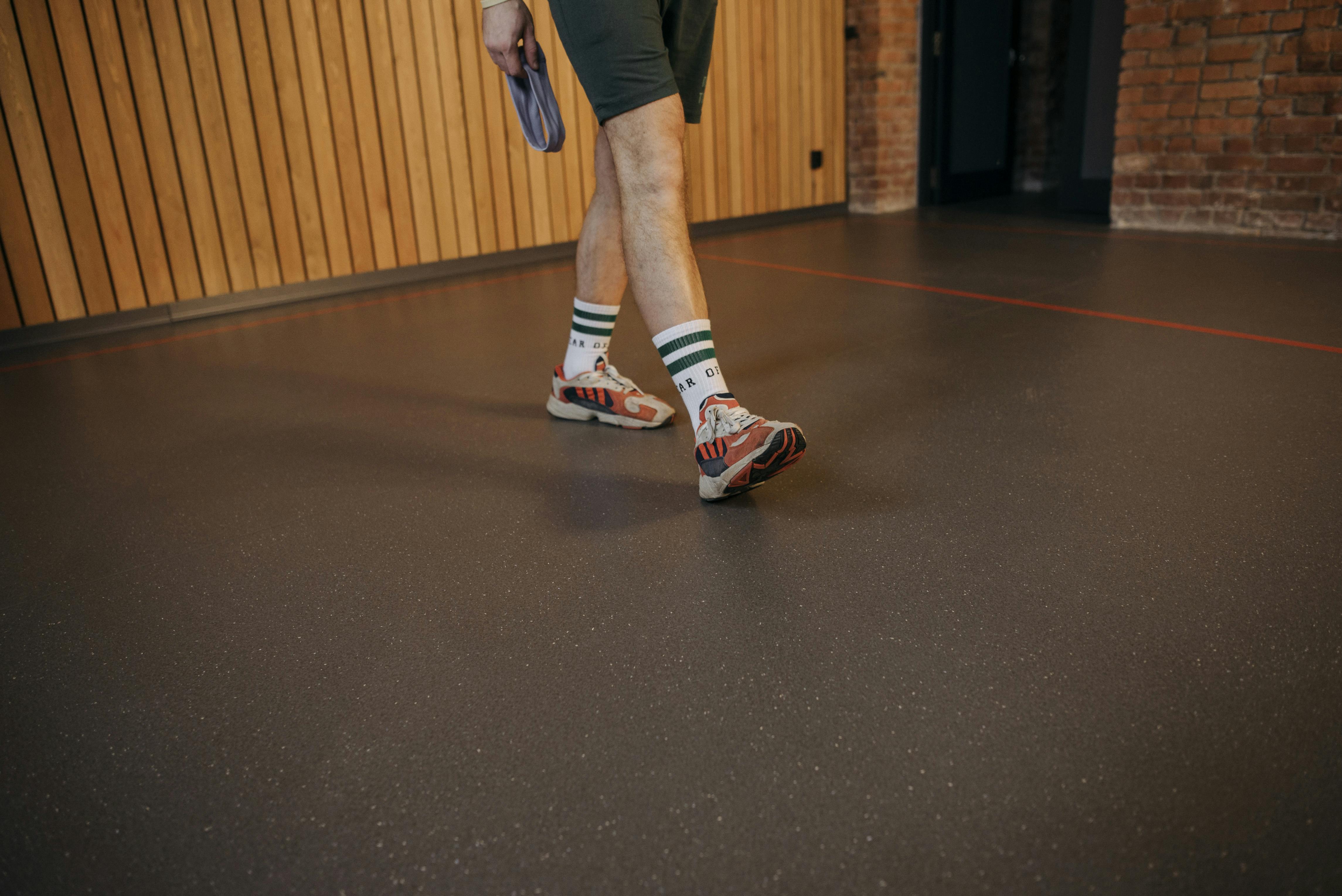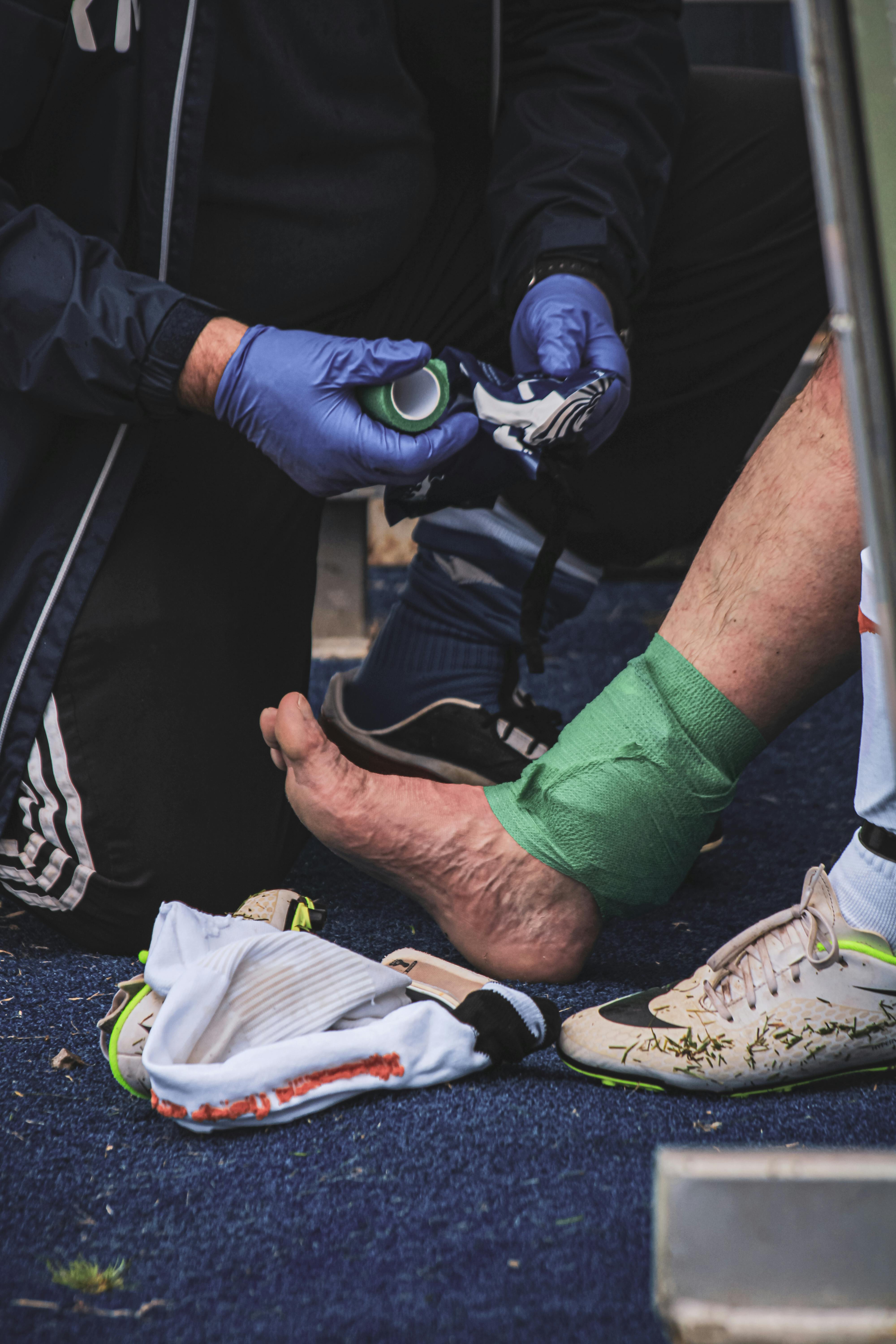How To Walk On a Sprained Ankle Without Crutches

Navigating the road to recovery after a sprained ankle can feel like walking a tightrope—balancing between activity and rest. Surprisingly, walking on a sprained ankle can aid its healing process when done correctly, providing necessary stimulation and support. However, heed caution: ignoring pain signals and pushing through can exacerbate the injury.
Let's explore the delicate balance between activity and rest when it comes to sprained ankles, ensuring you stride confidently toward recovery while avoiding potential setbacks.
Table of Contents
Is it Right to Start Walking With an Ankle Sprain?
When it comes to ankle sprains, movement is key for healing. Unlike muscles, joints like the ankle rely on synovial fluid for nourishment, which requires movement to circulate properly. Walking on a sprained ankle can aid this process, but it's crucial to find the right balance—don't push through pain.
Research suggests that starting to put weight on your ankle early can help recovery, but always listen to your body. Combining gentle movement with rehab efforts ensures you're on the right track to healing.
It’s all about how much walking and standing you can do without increasing your current pain and discomfort in the moment and in the subsequent 24 hours. Injuries often don’t complain while you’re overdoing something, but then they flare up hours later or even the next morning.
So, whenever you’ve been walking inside or outside the house on your sprained ankle, with or without support, remember to check that your ankle isn’t more sore and/or swollen up to 24 hours afterwards. If it is, you’ve been overdoing it and should scale back on your walking for the time being.
When to start walking on a sprained ankle
Walking after an ankle sprain can be a sign of progress, but it's essential to gauge your comfort level. Start with short walks indoors, ensuring no discomfort. Gradually increase distance and intensity, maintaining a normal gait pattern. Minor sprains may allow walking within a day or two, while severe ones may take longer.
Rushing can worsen the injury and lead to complications in other areas. Remember, patience is key—take the time needed for a complete recovery rather than attempting to "walk it off."
Also read How To Wrap A Sprained Ankle( Step by Step)
Tips for Walking on a Sprained Ankle
Recovering from a sprained ankle requires patience and diligent care to ensure a smooth healing process and minimize the risk of re-injury. By implementing supportive measures and following proper techniques, you can expedite recovery and return to normal activities with confidence.
- Supportive Measures:
- Utilize Supportive Devices:
- Consider using kinesiology tape, splints, or braces to provide stability and support to the injured ankle.
- These devices can help reduce strain on the ligaments and promote proper alignment during the healing process.
- Physical Therapy:
- A visit to a physical therapist can be invaluable in facilitating recovery.
- Therapists can recommend specific exercises and stretches tailored to your injury to strengthen the surrounding muscles and improve flexibility.
- They can also provide guidance on proper biomechanics to prevent future sprains.
- Walking Tips:
- Take Small Steps:
- Initially, focus on taking small, controlled steps to gradually reintroduce weight-bearing activities.
- This allows your ankle to adjust to the demands of walking while minimizing discomfort and instability.
- Maintain Proper Gait:
- Ensure proper weight distribution by rolling smoothly from heel to toe with each step.
- Avoid limping or favoring the injured ankle, as this can lead to imbalances and compensatory movements that may prolong recovery.
- Pain Management:
- Use Anti-inflammatory Medication:
- Over-the-counter anti-inflammatory medications such as ibuprofen or naproxen can help alleviate pain and reduce inflammation.
- These medications should be taken as directed by a healthcare professional to manage discomfort effectively.
- Prescription Pain Relief:
- For severe pain, consult with your doctor to discuss prescription pain relievers that may provide additional relief.
- Narcotic pain medications should be used sparingly and under medical supervision due to their potential for dependence and side effects.
- Home Safety:
- Remove Tripping Hazards:
- Create a safe environment by clearing pathways and removing obstacles that could cause falls.
- Keep floors clutter-free and ensure adequate lighting to prevent accidents during recovery.
- Enhance Accessibility:
- Consider rearranging furniture or installing handrails to provide additional support and stability around the house.
- R.I.C.E. Method:
- Follow the R.I.C.E. Protocol:
- Rest: Allow the injured ankle to rest and avoid activities that exacerbate pain or discomfort.
- Ice: Apply ice packs or cold compresses to reduce swelling and numb pain.
- Compression: Use an elastic bandage to apply gentle compression to the ankle, promoting circulation and reducing swelling.
- Elevation: Elevate the ankle above heart level whenever possible to minimize swelling and encourage fluid drainage.
- Heat Therapy:
- Apply Heat After Initial Injury:
- Once the initial swelling has subsided, consider incorporating heat therapy into your recovery regimen.
- Heat can help improve blood flow to the injured area, promoting tissue repair and reducing stiffness.
- Use caution when applying heat to avoid burns or exacerbating inflammation.
- Rehabilitation Exercises:
- Engage in Physical Therapy:
- Work closely with a physical therapist to develop a personalized rehabilitation program.
- Focus on exercises that target ankle strength, flexibility, and proprioception to restore function and prevent future injuries.
- Gradually progress through exercises as your ankle heals, being mindful of any discomfort or limitations.
- Supportive Devices:
- Choose the Right Ankle Support:
- Select appropriate ankle support based on the severity of your sprain and your activity level.
- Light support braces or compression sleeves are suitable for mild sprains and everyday activities.
- Medium to heavy support braces may be necessary for more severe sprains or high-impact sports.
Conclusion
Recovering from a sprained ankle requires a comprehensive approach that addresses pain management, supportive care, and rehabilitation exercises. By following these tips and techniques, you can promote healing, prevent re-injury, and regain mobility safely and effectively. Remember to consult with a healthcare professional for personalized guidance and treatment recommendations tailored to your individual needs.



